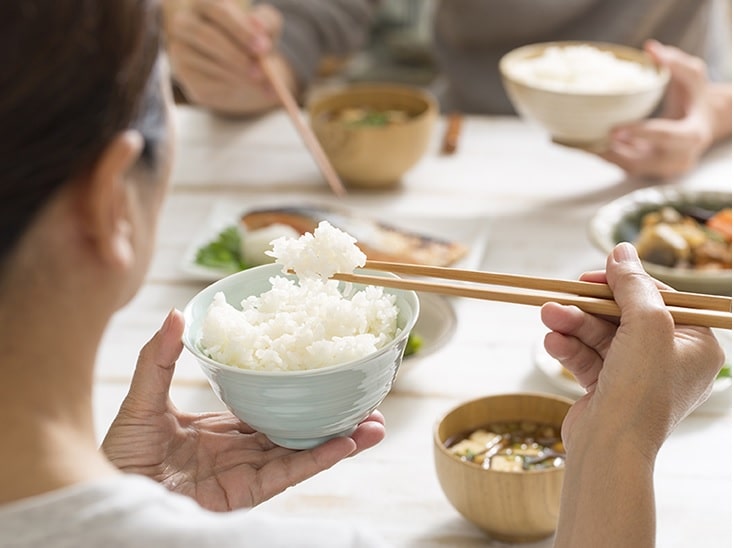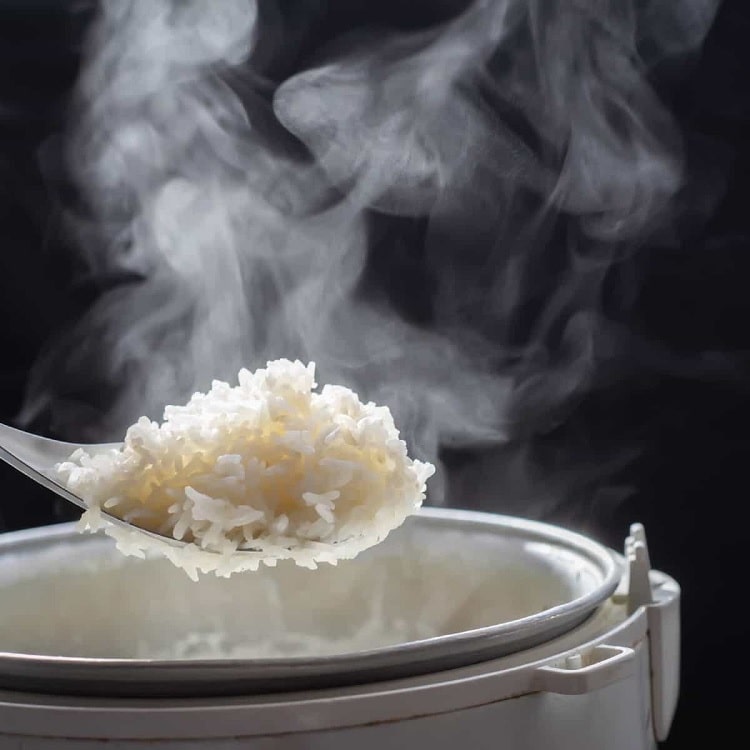Is Eating Rice For Weight Loss A Good Idea?
White rice could be the boss if there is a group of foods with a negative rep. In addition to being loathed for its starchy makeup, it is repeatedly chosen less due to its white pigment. Even medical professionals are more inclined to urge against white rice when guiding patients without taking into account local customs or accessibility to food. Most of the world’s nations eat much more white rice than brown rice.
Since it is so standard in Asia and South America, it contributes over 24% of the caloric intake worldwide.
Further, rice comes in diverse types, hues, and textures, allowing multiple methods to prepare and enjoy. White rice is the most favored variety of rice people consume since it is the easiest to prepare and digest.
The effectiveness of rice in nourishment is intriguing, given the rise in the number of individuals striving for the healthiest diets and therapies. Additionally, obesity is a crisis for world health, nudging experimenters to look for ways to stop it from spreading. Nevertheless, what role rice fits in these contexts needs to be elucidated.
Do you think white rice is good for the body? Let’s dispel the myth that white food is nutritionally empty. And while it is true that white rice has fewer essential minerals than its equivalent, brown rice, the advantages of white rice must be examined more closely. This piece provides an answer to this query.

What Is Rice?
Rice is a food that comes in two types: whole grain and cultivated grain. Although rice is processed and lacks vital elements when milling, it occasionally has a finer flavor or more extended storage.
Three main ingredients are present in every whole grain:
- Bran
- Germ
- Endosperm
Whole grains that retain their bran and germ are brown and raw rice. They are hence nourishing and plentiful in fiber and minerals.
However, the bran and nutrient-rich germ have been eliminated from white rice, which robs the grain of its wholesomest elements. Once more, the intent is to enrich the culinary qualities while enhancing the grain’s taste and durability.
The nutrient profiles of diverse rice varieties can have various consequences on health. The majority of the time, though, whole-grain rice is an excellent source of –
- Folate
- Iron
- Magnesium
- Manganese
- Phosphorus,
- Selenium
- Thiamine
What Is The Nutritional Value Of Rice?
The composition of nutrients for 1 cup of prepared long premium white rice is as follows:
- 205 calories
- 28 grams of carbs
- 6 grams of fiber
- 4 grams of protein
- 0.4 grams of fat
The nutritional composition for 1 cup of long premium brown rice is as follows:
- 248 calories
- 52 grams carbs,
- 3 grams of fiber
- 6 grams of protein
- 2 grams of fat
In What Ways Are the Two Types of Rice – White & Brown Different?
The bran (the fibrous outermost part) and germ (the nutrient-rich center) of rice are stripped throughout preparation to produce white rice, which differs from brown rice in terms of flavor, structure, color, and nutritional composition. Thus, white rice’s nutritional content differs from brown rice.
What Advantages Does White Rice Provide For Your Nutrition?
- It has a lot of fiber. Our diets must contain fiber since it has several advantages, including better digestion.
- Your cholesterol levels may go down with it. Lowering your cholesterol also decreases your chances of diabetes, cardiovascular disease, and stroke.
- It may make you feel satisfied. With all the fiber, your tummy might experience satiated, and you might be content with less caloric intake, which may encourage you to consume less generally and aid in fat loss.
- It is incredibly nutrient-dense. It has a lot of minerals and vitamins that are important for your heart, immune system, and other vital bodily processes.
- It provides an immediate boost of energy.
- It is easy to digest.
- It is easily accessible.
However, white rice is believed to have “blank” calories since it has less dietary content than other rice varieties and doesn’t significantly benefit health.
Does Rice Help You Lose Weight?
A healthy diet for losing weight might include rice. Emphasis on portion management, brown rice, additional veggies, low-calorie additives, and intelligent cooking skills are crucial ingredients.
White rice is believed to have “blank” calories since it has less dietary content than other rice varieties and doesn’t significantly benefit health.
Use Proportion Control
Although whole-grain rice is nutritious, it can be calorie-dense. Despite the advantages, it is simple to overindulge. It’s necessary to exercise mindful eating to avoid eating many additional pounds of rice.
1 cup is the typical serving size for rice. Rice should be measured before serving rather than being spooned into a dish or put on a platter.
Choose Whole Grain
All grains begin their lives as whole grains before undergoing extensive processing to the extent where they are refined. Whole grains are made up of the complete plant’s kernel.
Start Filling Up On Veggies
Despite having few calories, vegetables are rich in fiber and micronutrients. Combine some veggies with your rice to reduce the calories. Consider cooking some diced onions, red pepper, or garlic and mixing them with the rice, or try sautéing greens and putting this into the dish.
Be Conscious Of Extras
The majority of the time, when rice is made for various cuisines, it includes extras that raise the caloric intake.
Based on the ingredients put into it, cooked rice is a preferable choice. Watch out for extra cream, lard, and other cooking oils. For instance, 100 calories are included in 1 spoonful of butter.
Consider adding little stock to rice to add a flavor with fewer calories and make it slightly more low-calorie friendly. Add fresh or dried condiments and speck with lime juice.
To Sum Up
Do you think white rice is good? Although white rice does not contain as many elements as brown rice, there are several edges to consuming white rice.
Furthermore, presumably, you don’t consume white rice by itself. More frequently, it is combined with vegetables and a source of protein to increase the food’s fiber-rich content and, thus, its enjoyment.
You may still prefer white rice and other starchy foods in your meals if you make part of your carb intake from whole grains.
Frequently Asked Questions
In conclusion, white rice doesn’t seem helpful or harmful for losing weight. However, it has been increasingly frequently demonstrated that consuming diets rich in whole grains, such as brown rice, can help lose weight and keep a healthy weight.
White rice doesn’t have a remarkable capacity to encourage weight growth. However, overeating any meal, even rice, can make you gain weight.
Eating any carbohydrate-containing item in the evenings or at night is not suitable, but eating rice after sunset is not. Obesity and belly bloat can result from eating carbohydrate-rich meals late at night. Aside from that, eating rice late at night might also give you a cold.






